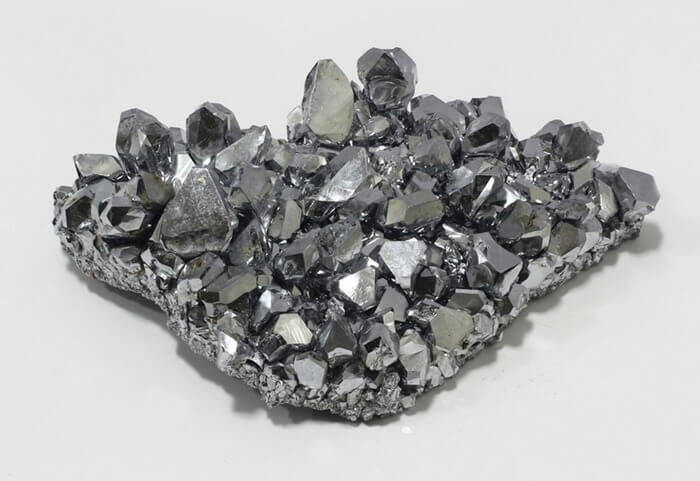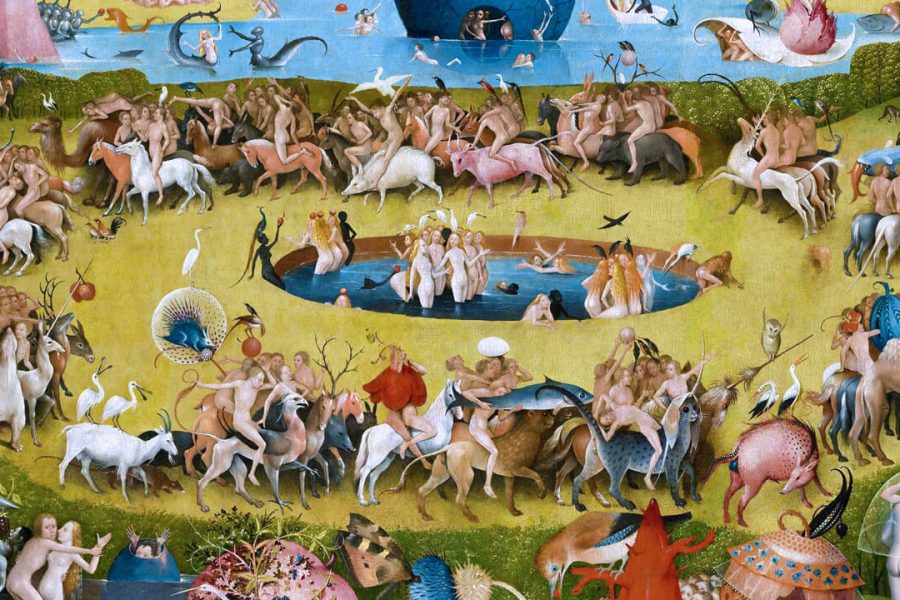Can you imagine what would have happened if our ancestors had not discovered important metals such as silver, gold, copper and iron? We would probably still be living in huts, using stone as our main tool. It is the strength of metal that has played an important role in shaping our past and now acts as the foundation on which we build our future.
If you are wondering which metals are the hardest and most durable in the world, we will answer this question taking into account various estimates of the relative hardness of materials (Mohs scale, Brinell method), as well as such parameters as:
- Young's modulus: takes into account the elasticity of an element under tension, that is, the ability of an object to resist elastic deformation.
- Yield strength: defines the maximum tensile strength of a material after which it begins to exhibit plastic behavior.
- Tensile strength: the ultimate mechanical stress beyond which a material begins to fail.
10. Tantalum

This metal has three advantages at once: it is strong, dense and very resistant to corrosion. In addition, this element belongs to the group of refractory metals, such as tungsten. To melt tantalum, you will have to make a fire at a temperature of 3,017 °C.
Tantalum is primarily used in the electronics sector to produce long-lasting, heavy-duty capacitors for phones, home computers, cameras, and even electronic devices in cars.
9. Beryllium

But it is better not to approach this metal beauty without protective equipment. Because beryllium is highly toxic and has a carcinogenic and allergic effect. If you inhale air containing dust or beryllium vapors, you will develop berylliosis, a disease that affects the lungs.
However, beryllium is not only harmful, but also beneficial. For example, add just 0.5 % of beryllium to steel and you will get springs that will be elastic even if you bring them to red-hot temperature. They withstand billions of load cycles.
Beryllium is used in the aerospace industry to create heat shields and guidance systems, to create fireproof materials. And even the vacuum tube of the Large Hadron Collider is made of beryllium.
8. Uranus

This naturally occurring radioactive substance is very widespread in the earth's crust, but is concentrated in certain hard rock formations.
One of the hardest metals in the world has two commercially significant uses: nuclear weapons and nuclear reactors. The end products of the uranium industry are therefore bombs and radioactive waste.
7. Iron and steel

As a pure substance, iron is not as hard as other elements in this list. But because it is relatively inexpensive to extract, it is often combined with other elements to make steel.
Steel is a very strong alloy of iron and other elements, such as carbon. It is the most commonly used material in construction, engineering, and other industries. And even if you have nothing to do with them, you still use steel every time you cut food with a knife (unless it is ceramic, of course).
6. Titanium

Titanium is practically a synonym for strength. It has an impressive specific strength (30-35 km), which is almost twice as high as the similar characteristic of alloy steels.
Being a refractory metal, titanium has high resistance to heat and abrasion, so it is one of the most popular alloys. For example, it can be alloyed with iron and carbon.
If you need a very hard and at the same time very light structure, then you will not find a better metal than titanium. This makes it the number one choice for creating various parts in aircraft and rocket engineering and shipbuilding.
5. Rhenium

This is a very rare and expensive metal, which, although it is found in nature in its pure form, is usually found as an “additive” to molybdenite.
If Iron Man's suit were made of rhenium, it could withstand temperatures of 2000°C without losing its strength. We will not say what would happen to Iron Man inside the suit after such a "fire show".
Russia is the third country in the world in terms of natural rhenium reserves. This metal is used in the petrochemical industry, electronics and electrical engineering, and in the creation of aircraft and rocket engines.
4. Chrome

On the Mohs scale, which measures the resistance of chemical elements to scratches, chromium ranks in the top five, behind only boron, diamond and tungsten.
Chromium is valued for its high corrosion resistance and hardness. It is easier to handle than the platinum group metals and is more abundant, making it a popular element used in alloys such as stainless steel.
And one of the strongest metals on Earth is used to create dietary supplements. Of course, you will not be ingesting pure chromium, but its food compound with other substances (for example, chromium picolinate).
3. Iridium

Like its "brother" osmium, iridium is a platinum group metal and resembles platinum in appearance. It is very hard and refractory. To melt iridium, you would have to start a fire with a temperature of over 2000 °C.
Iridium is considered one of the heaviest metals on Earth, as well as one of the most corrosion-resistant elements.
2. Osmium

This "tough nut" in the world of metals belongs to the platinum group and has a high density. In fact, it is the densest natural element on Earth (22.61 g/cm3). For the same reason, osmium does not melt until 3033 ° C.
When alloyed with other platinum group metals (such as iridium, platinum, and palladium), it can be used in many different applications where hardness and durability are needed, such as nuclear waste storage tanks.
1. Tungsten

The strongest metal that exists in nature, this rare chemical element is also the most refractory of metals (3422 °C).
It was first discovered in the form of acid (tungsten trioxide) in 1781 by Swedish chemist Carl Scheele. Further research led two Spanish scientists, Juan José and Fausto d'Elhuyar, to discover the acid from the mineral wolframite, from which they subsequently isolated tungsten using charcoal.
In addition to its widespread use in incandescent lamps, tungsten's ability to operate in extreme heat makes it one of the most attractive elements for the weapons industry. During World War II, the metal played an important role in initiating economic and political relations between European countries.
Tungsten is also used to make hard alloys and, in the aerospace industry, to make rocket nozzles.
Table of tensile strength of metals
| Metal | Designation | Tensile strength, MPa |
|---|---|---|
| Lead | Pb | 18 |
| Tin | Sn | 20 |
| Cadmium | Cd | 62 |
| Aluminum | Al | 80 |
| Beryllium | Be | 140 |
| Magnesium | Mg | 170 |
| Copper | Cu | 220 |
| Cobalt | Co | 240 |
| Iron | Fe | 250 |
| Niobium | Nb | 340 |
| Nickel | Ni | 400 |
| Titanium | You | 600 |
| Molybdenum | Mo | 700 |
| Zirconium | Zr | 950 |
| Tungsten | W | 1200 |
Alloys vs. Metals

Alloys are combinations of metals, and the main reason for creating them is to produce a stronger material. The most important alloy is steel, which is a combination of iron and carbon.
The higher the strength of the alloy, the better. And ordinary steel is not a "champion" here. Vanadium steel-based alloys seem especially promising to metallurgists: several companies produce versions with a tensile strength of up to 5205 MPa.
The strongest and hardest biocompatible material at the moment is the titanium-gold alloy β-Ti3Au.














Оставить Комментарий